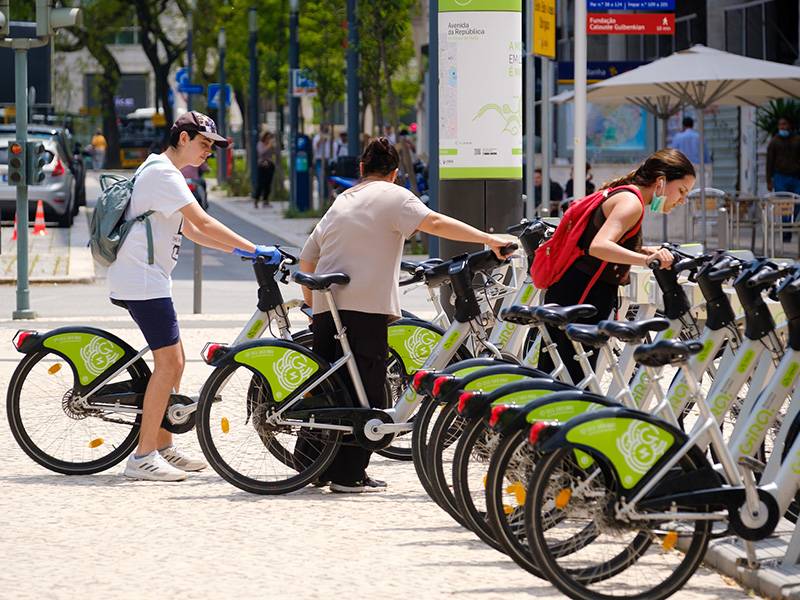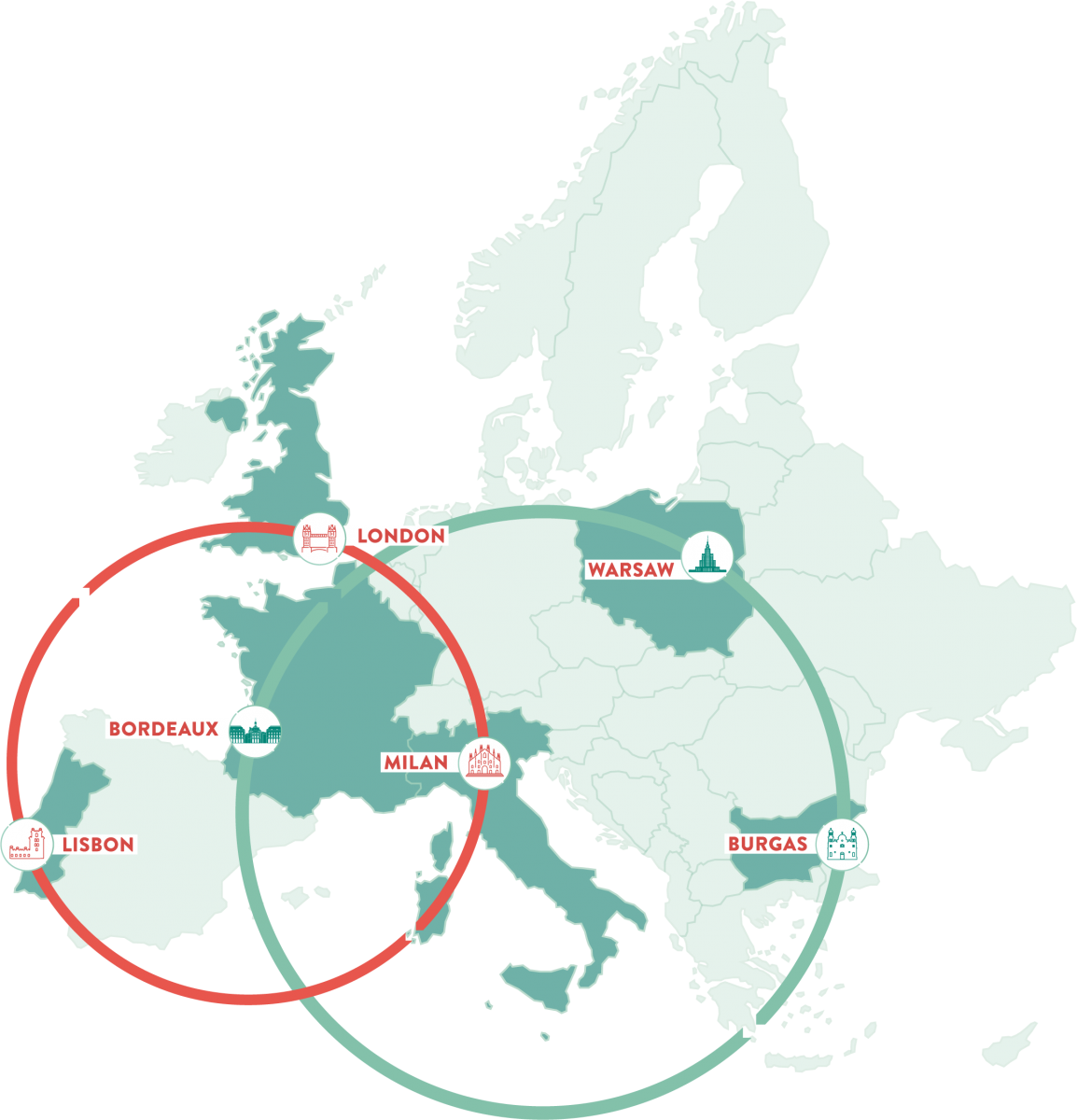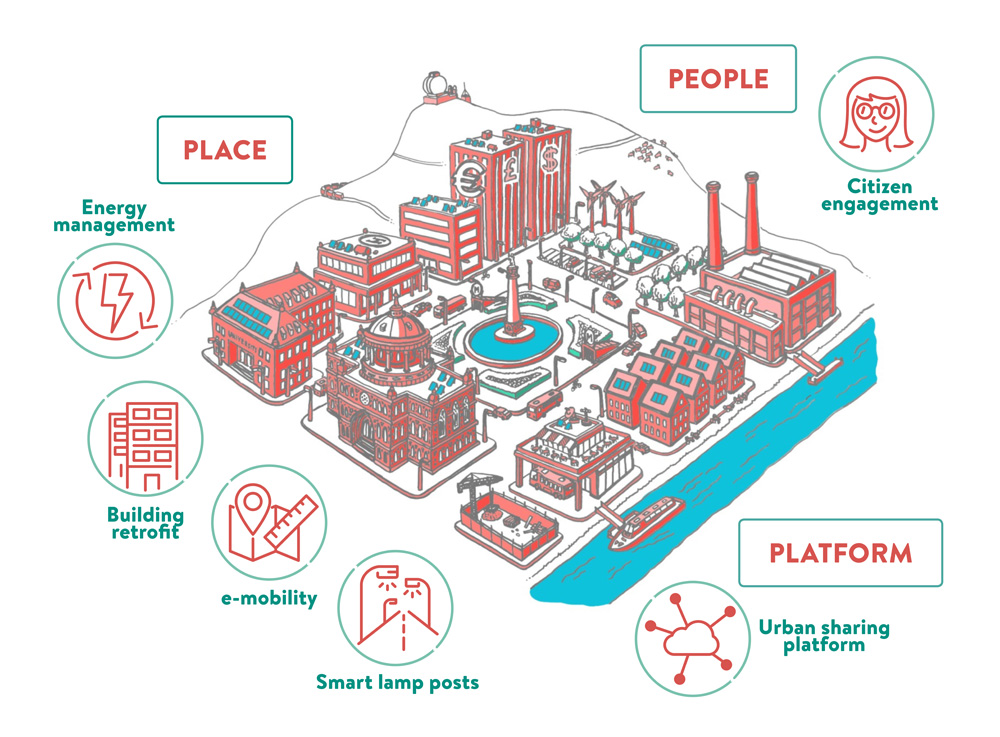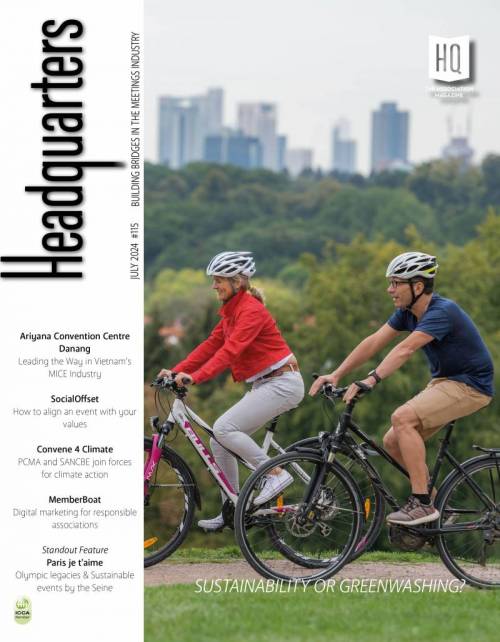Sharing Cities: “The Global Events Industry Has Been Critical to our Programme”


Sharing Cities is a major international smart cities venture addressing some of the most pressing urban challenges facing today’s cities. In short, three lighthouse cities (London, Lisbon, Milan) are implementing innovative models in close collaboration with three fellow cities (Bordeaux, Burgas, Warsaw) in order to craft a smart intersectional plan. After drawing on €25 million in EU funding, the project aims to trigger €500 million in investment in a collaborative effort to expand a smart strategy that involves energy use, low carbon transport and data management. The programme director, Nathan Pierce (on the left), shed light on this destination incubator for HQ.
1) How has this circular approach been implemented by these cities? What kind of collaborative practices are they adopting right now?
Since 2016, our six cities have collaborated to develop workable business models for smart technologies that can be scaled up and replicated across other European cities. In doing so they have supported the growth of a new green smart infrastructure market. Replication has allowed our fellow cities to emulate smart city strategies or measures that our lighthouse cities have successfully implemented. This approach is so valuable as it allows fellow cities to collaborate with lighthouse cities through a process of research, analysis and assessment of what can be done within their own city contexts. The approach is more than just a copy of one solution, and takes into consideration the circumstances of the recipient city. All six cities have demonstrated the benefits that using smart tech and working together can have on carbon reduction and service delivery in our cities. In the first phase, lighthouse cities implemented replicable smart city measures – from smart building retrofits, e-mobility, and sustainabile energy management systems, to smart infrastructure, urban sharing platforms and digital social markets. Using the circular process and learnings from demonstration cities, fellow cities co-designed, validated and implemented similar solutions and models within their own city contexts. Our cities are connected with 34 partners from the public and private sectors which really enhances collaborative practice and success.
2) What were the major key findings and turning points you found both in the lighthouse and fellow cities?
It is vital that we take a focused, city-needs led approach to commissioning smart and digital technology to address local challenges. Solutions, or technology-led approaches should not be developed independently and then retrofitted to a city. A city needs to identify what outcomes it wants to achieve at a local level and then engage the marketplace in designing a solution for that need − including the citizen in this journey. We have also demonstrated the investment potential of smart infrastructure by leveraging in over €264 million of investment as a result of the Sharing Cities programme. Moreover, the value of public, private and academic partnerships and the role they can play from design through to monitoring, is really crucial. We learnt that these partnerships often result in solutions with greater longevity.
These are just three takeaways, there are many more including what we learnt from the technical implementation of different types of technologies, good and bad. Scaling up a programme like Sharing Cities will always come with challenges and opportunities. And of course there are blockers to progress, that is the nature of these programmes. It’s common to see a lack of confidence in technical solutions, absence of city budget to cover costs, challenges in justifying expenditure, and difficulties in aligning inputs and returns across the various city departments and service providers.
 3) How are you planning to replicate, scale up and improve the best practices of this trial period at European level?
3) How are you planning to replicate, scale up and improve the best practices of this trial period at European level?
The €500 million trigger investment goal is a great catalyst for collaborative action. Through the efforts of all 34 Sharing Cities partners, coordinated by the Greater London Authority, the solutions demonstrated hold considerable legitimacy. It’s exciting to see city projects take off. Milan is influencing the adoption of urban data platforms in a dozen other Italian cities. Lisbon continues to expand its soft infrastructure solutions for urban mobility across the entire city, transforming the way people think about moving around the city. Greenwich is taking advantage of the proven building upgrades to expand the approach across its building portfolio.
The “fellow” cities of Burgas, Warsaw, and Bordeaux, are also reaping the benefits of their commitment to co-create and adopt solutions from the lead cities. Warsaw is in the process of implementing electric mobility islands upgrading the city’s parking facilities, including more than €800,000 towards its “Park & Ride” car park scheme designed to boost the use of e-mobility and reduce congestion. This concept combines renewable power management with green infrastructure and will be deployed in 16 locations across the city. And Burgas has already captured a €175 million investment across 15 projects in uenced by the learning from being part of the Sharing Cities network.
A major output and legacy of Sharing Cities is the development of playbooks – practical guides that provide a step-by-step process for other European cities looking to replicate smart solutions in their own urban contexts. The process of moving from pilot to scale-up has been captured and published in the playbooks, and will help councils considering using smart technology to deliver better services, covering topics ranging from improving urban mobility to engaging communities in sustainable lifestyles.
4) The holistic approach between people, place and platform is at the heart of your smart urban design, and is the very essence of these collaborative models. Which one of these three pillars was the most difficult to coordinate and adapt to the final plan? Did it vary from city to city?
Generally, we have found that the smart cities market is largely focused on the ‘soluton’ without sufficiently considering the demand, and what it is that cities and communities – or place and people - actually need. In many instances pre-existing technological solutions are being retrofitted to a city’s needs, often leading to a lack of public trust in or engagement with the solutions proposed. In turn, cities need to improve how they express their needs to the marketplace, for example, by defining use cases – the specific situations in which a product or service could potentially be used to address an issue. Fortunately, many use cases are common to most cities so by documenting and sharing experiences this process can be accelerated and standardised.
Adoption of smart infrastructure needs to be managed carefully and transparently. Engaging the local community in decisions about data collection and the use of data insights is paramount to the success of pilot projects and their potential for scale. In doing so, cities can gain a more granular understanding of local contexts and therefore pinpoint in advance the specific areas and issues smart technology can help to address.
In Sharing Cities we’ve used a range of citizen-centric methods to enable greater collaboration between communities and stakeholders, from co-design workshops to user journey mapping, to help us understand how different groups of people might interact with different types of technologies. We’ve also developed a digital community engagement platform, the Digital Social Market – an app designed to encourage behaviour change and environmentally conscious choices using peer-to-peer incentives and rewards.
This design approach – most crucially, led by needs and driven by outcomes – has delivered substantial benefits to our demonstrator districts, not only in exceeding our environmental targets, but more importantly in creating solutions that are adopted by the local community and are built to last.
 5) How can these key measures − such as citizen engagement, energy management or urban sharing platforms − impact a new business events industry along the lines of innovation and technology?
5) How can these key measures − such as citizen engagement, energy management or urban sharing platforms − impact a new business events industry along the lines of innovation and technology?
As cities get smarter, they are becoming attractive destinations for the worlds best thought leaders, policy makers and innovators to link-up and guide the smart city urban transformaton. City networks and the opportunity to connect in different urban environments has been essential to the success of Sharing Cities, facilitating knowledge-sharing and learning, and accelerating the testing of smart city solutions. This has raised the level of ambition amongst cities, giving political leaders the confidence to deploy solutions that will make their cities smarter.
The global events industry has been critical to our programme. Since 2016, we’ve used major trade shows like Barcelona’s Smart City World Expo as a destination for our partners to come together to design, learn and share. Over the last five years we’ve seen new events emerge that reflect what we are trying to achieve as a network of cities – and this galvanises interest and provides greater confidence in landmark programmes such as Sharing Cities.
6) How are these cities converging their sharing activities and urban regeneration with the goals of a green and circular economy?
Sharing Cities is an agile and collaborative smart cities ecosystem. The technologies our stakeholders have deployed have been integrated to contribute towards existing city agendas and targets to reduce carbon emissions. The programme draws on €24.5 million in funding from the EU Horizon 2020 Smart Cities and Communities programme and has a target to reach €500 million in investment by the end of 2021. So far, Sharing Cities has seen 10 low-carbon technologies hit 50% of their target investment from a mix of public and private funds. This includes retrofitting buildings with energy-saving measures, developing sustainable energy management systems for new and existing developments, shared electric mobility and smart street infrastructure. Flexible power consumption is essential for balancing the energy network and supporting the integration of renewable energy generation. Through adjustments in temporal power consumption, participants of Greenwich Energy Hero demonstrated the capability for domestic consumption to be an important component in the future energy landscape.
In Milan, the SharingMi digital platform was deployed in the city to bring together citizens who care strongly about sustainability issues. It encouraged users to share stories, experiences and ideas with other members to grow awareness and stimulate action around urban challenges. The community seeks to reframe and normalise sustainability and encourages users to reflect on their own behaviour and make changes for good. Once again, the platform was developed to fit within the city’s existing sustainability agenda – and it connected the needs of local government to the aspirations of citizens and businesses.
Other Articles
About Us
Supported by the Union of International Associations (UIA), the International Association of Professional Congress Organisers (IAPCO) and the Interel Group, the global public affairs and association management consultancy, Headquarters Magazines serve the needs of international associations organising worldwide congresses.















